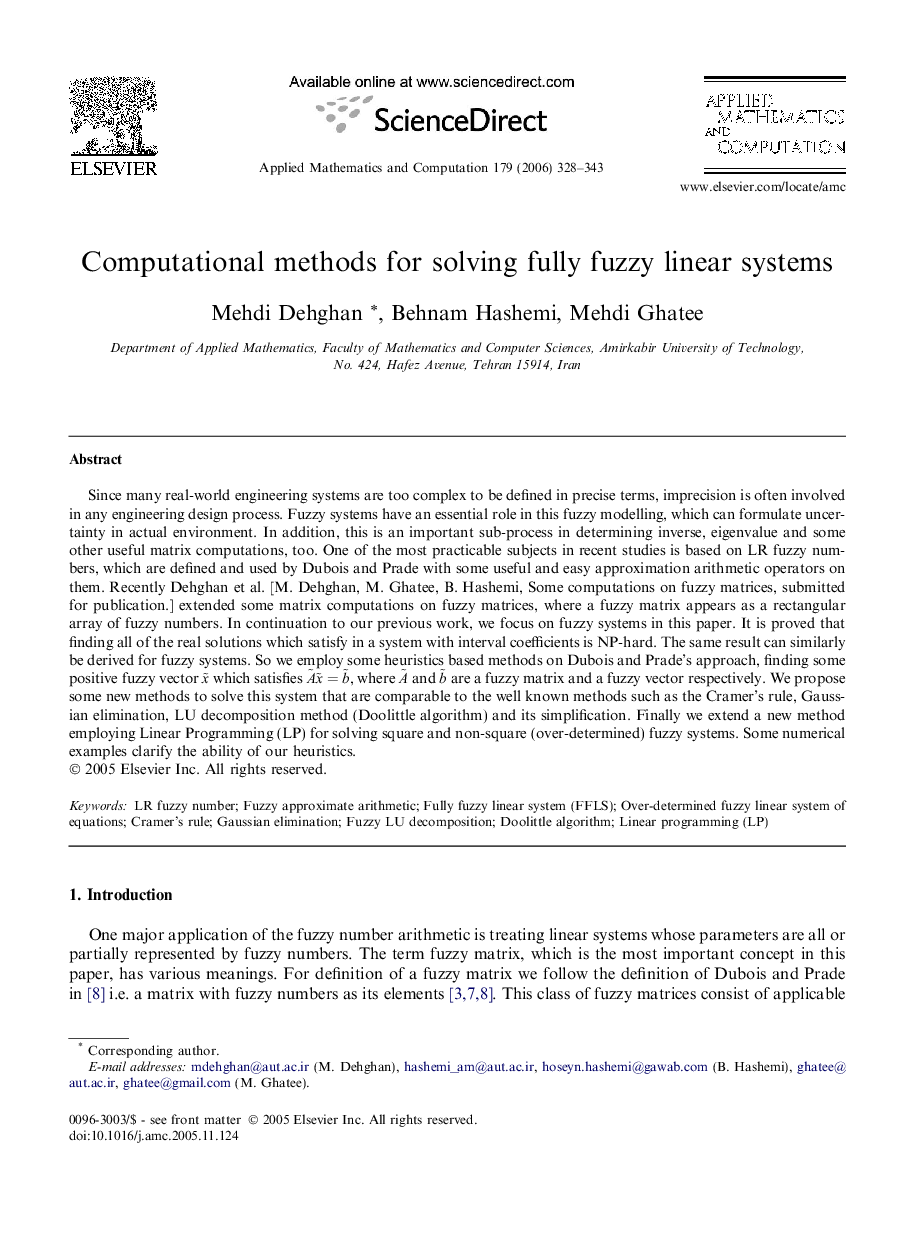| Article ID | Journal | Published Year | Pages | File Type |
|---|---|---|---|---|
| 4636879 | Applied Mathematics and Computation | 2006 | 16 Pages |
Since many real-world engineering systems are too complex to be defined in precise terms, imprecision is often involved in any engineering design process. Fuzzy systems have an essential role in this fuzzy modelling, which can formulate uncertainty in actual environment. In addition, this is an important sub-process in determining inverse, eigenvalue and some other useful matrix computations, too. One of the most practicable subjects in recent studies is based on LR fuzzy numbers, which are defined and used by Dubois and Prade with some useful and easy approximation arithmetic operators on them. Recently Dehghan et al. [M. Dehghan, M. Ghatee, B. Hashemi, Some computations on fuzzy matrices, submitted for publication.] extended some matrix computations on fuzzy matrices, where a fuzzy matrix appears as a rectangular array of fuzzy numbers. In continuation to our previous work, we focus on fuzzy systems in this paper. It is proved that finding all of the real solutions which satisfy in a system with interval coefficients is NP-hard. The same result can similarly be derived for fuzzy systems. So we employ some heuristics based methods on Dubois and Prade’s approach, finding some positive fuzzy vector x˜ which satisfies A˜x˜=b˜, where A˜ and b˜ are a fuzzy matrix and a fuzzy vector respectively. We propose some new methods to solve this system that are comparable to the well known methods such as the Cramer’s rule, Gaussian elimination, LU decomposition method (Doolittle algorithm) and its simplification. Finally we extend a new method employing Linear Programming (LP) for solving square and non-square (over-determined) fuzzy systems. Some numerical examples clarify the ability of our heuristics.
